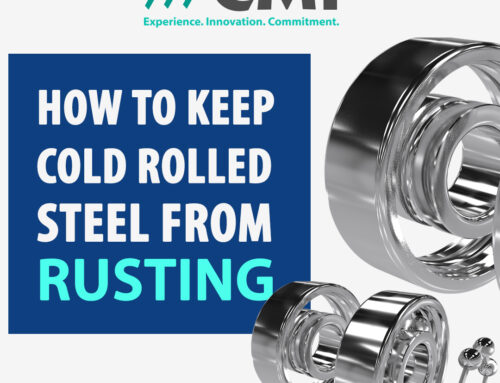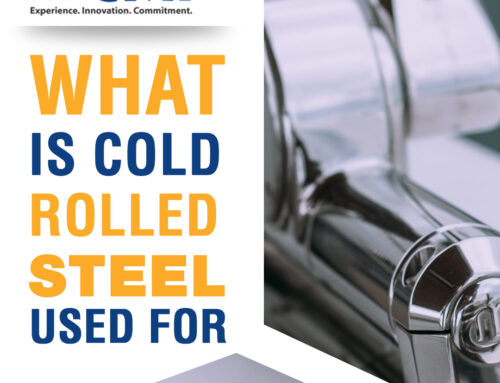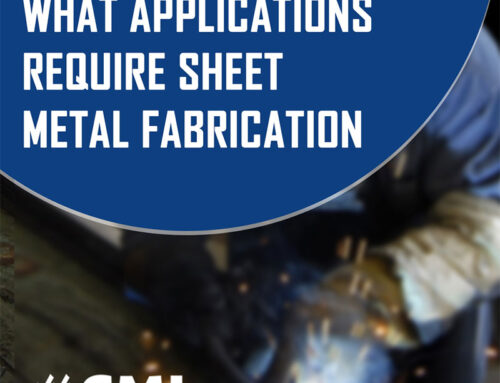
Steel is strengthened by cold rolling. Contrary to hot rolling, the process of cold rolling can only be performed when the temperature of a specific metal lies below its recrystallization temperature. Cold rolling is conducted at an ambient temperature, unlike hot rolling, which uses elevated temperatures. As a result, metal may undergo structural change, due to the high-stress applications in a mechanical manner, without the need to apply heat. Besides, the metal’s strength can be enhanced by up to 20% as a result of strain hardening, also ensuring the enhancement of a metal’s surface quality.
Precision manufacturing is possible while creating a cold rolled stainless steel coil, which yields the production of a metal exhibiting exceptionally stiff cross-sectional tolerances. Cold rolling the stainless-steel material can achieve different degrees of hardness during the finishing process. Three major distinctions of hard stocks exist in the market: quarter, half, and full. This leads to the trade-off between the yield point and the steel’s ductility requirements. The more the yield point, the less the ductility measurements. The cold rolling process is used in moderate draw applications with high uniform ductility requirements.
Also, in situations when the metal needs to be bent without the threat of breaking, cold-rolled metal is utilized.
Applications for Cold Rolled Steel
There are many applications of cold-rolled steel products. Some of them are discussed below.
Construction

Construction and development are two vital industrial buildings where cold-rolled steel types are used in huge quantities. This high usage of construction materials is due to the importance of steel in making a structure resistant to diverse environmental conditions. Cold-rolled steels are also used for framing in the construction industry. You will often see this in commercial buildings as the main structural component. The strength of cold-formed steel elements is superior to that of other metal frame materials while being lighter than those materials. This makes it a very popular material for buildings. Hotels, dorms, and other multi-story buildings are constructed using cold-rolled frames. Cold-formed steel design has tighter dimensional tolerances and a high tensile strength, which allows less quantity of components to be needed but still has the strength we need to get the job done. Bolts and screws for metal sheeting rails are made from cold rolled steel. It is used in the application for floors and other building elements.
While construction is one of the largest users of cold roll steel, there are other applications that you will find this material has become a big part of. Let’s take a look at those.
Home appliances
Cold-rolled steel has a variety of uses, including its widespread usage in home appliances. The application of cold-rolled steel can be found even in the smallest gadget used in homes. Various appliances use cold rolled steel, such as water heaters, washers, dryers, and PCs. Cold-rolled steel has tighter tolerances than other metals, so it is commonly used in household appliances.
Cold-formed steel structures are preferred for home appliances because of their outstanding tensile and yield strengths. There are several home applications that contain cold-formed steel members, such as refrigerators, washers, dryers, and lawnmowers. In addition, you can find this material in computers and other home applications such as shelving and decor. When looking at cold-formed steel members, the one thing you will find in common is the very smooth surface with excellent design standards. The hot rolling process doesn’t yield this type of steel with a smooth finish, making it less desirable for certain applications. Cold-rolled steel is easily decorated with paint and different coatings to protect it against erosion.
Pressure vessels
Different materials’ cores are subjected to extremely high pressure via the pressure vessels. The petrochemical and nuclear industries rely heavily on these boats. Due to its elongation rate, embrittlement, and fatigue strength, cold-rolled steel is employed in pressure vessels. Cold-rolled steel is applied in pressure vessels to compress the total pressure created by the vessel on the finished product due to its physical characteristics.
Machinery
It has been established that cold rolling can be 20% stronger than hot rolling. Cold-rolled steel has low yield strength, good mechanical characteristics, no aging, and great stamping performance. As a result, molding, punching, drilling, and cutting with high precision may be performed. Hence, this can manufacture some really precise shapes with no internal stresses. Therefore, this material is used by many mechanical goods during the manufacturing process. You’ll find cold-reduced steel in various fastening methods and components for various household parts.
This material is very versatile and can be found in various applications.
It is also prevalent in the manufacturing industry. From the large machines you find on the flooring of a manufacturing facility to the different components used by the manufacturer, cold roll steel is a very common material in our lives. You probably come in contact with it more than you even know.
Automobile
Cold-formed steel sheet outperforms hot-rolled steel in the auto industry, which depends heavily on steel. This is because it will be more shockproof, wear-resistant, and more firm than other steels. As a result, in this business, it is mostly employed to create the bodywork and the parts equipped with bearings of cars and other vehicles, along with manufacturing gasoline tanks, automotive frame pressings, agricultural equipment, electricity-powered motors, etc.
Due to less internal stress, you will find common shapes of cold-reducing steel all over the automobile industry. The automotive industry is the second largest industry, next to construction, that uses this type of metal material.
Manufacturing
The manufacturing sector employs cold-formed steel construction frequently for various purposes, including building materials, building frames, steel sheds, and a wide variety of shapes. The cold-rolled steel sheet is a thin, flat, rectangular sheet of metal that has been finished and twisted or coiled after cold rolling. The cold-rolled steel coil is similar to the cold-rolled tube, a steel pipe with a hollow part. Along with that, it has a length that is substantially greater than its diameter or circumference.
Difference Between Hard Rolling and Cold Rolling
The method opted for processing the steel is the main distinguishing factor between different steel grades: hot and cold. High-temperature rolling produces hot-rolled steel. Contrarily, cold-rolled steel sheet metal undergoes cold reduction processing. In the cooling process, annealing and temper rolling comes after cooling the raw material. This results in fantastic dimensional accuracy and concentric accuracy. Depending on their grade, additional treatment, and steel-structural requirements, steel can be rolled either at extremely hot or cool temperatures.
Advantages and Disadvantages of Cold Rolling

Cold rolling the steel provides various advantages. Its key advantage is 20% more material strength in steel with cold finishing compared to hot rolled steel. Steel loses strength when it is under heat treatment technique. Steel maintains its strength when elevated temperatures are not used. As a result, anything with cold-rolled steel tends to live longer than anything with hot-rolled steel. The appearance of cold rolled steel is another benefit.
It is not surprising that cold-rolled steel is frequently chosen for applications needing more technical precision or aesthetics is crucial because it has superior surface properties than hot-rolled steel. However, cold-finished items cost more because they require more processing.
From physical traits perspective, the strength of cold-rolled steels surpasses the strength of standard hot-rolled steels, in contrast to its hot-rolled predecessor, which frequently looks ragged. But there is a cost to everything. Therefore, the cold rolled steel being on the expensive side in contrast to the hot rolled steel is considered as its major drawback.
Overall, cold-rolled steel provides numerous applications in various fields. Hence, it is preferred widely as compared to hot rolled steel. It has strength, finish, and durability than hot rolled. Because of this, you will find cold-rolled steel used in various applications.






![Ballistic Materials: All You Need To Know [2022]](https://custommaterials.com/wp-content/uploads/2022/05/featured-image-Balistic-Materials-500x383.jpg?x26279)